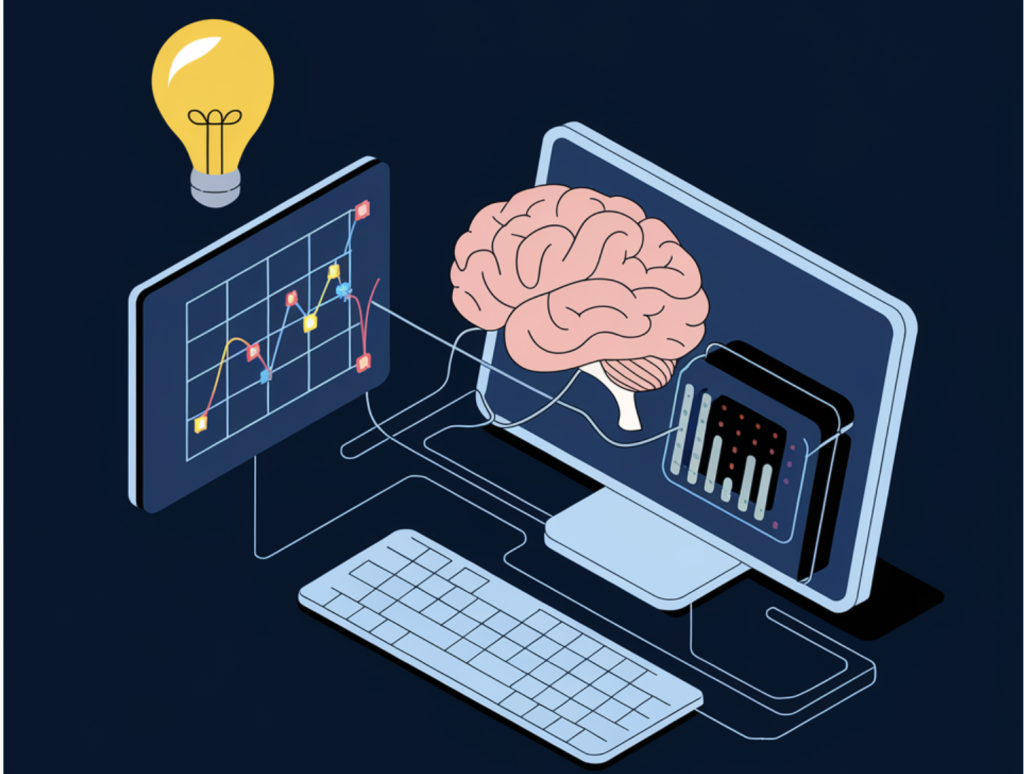

In today’s digital age, we are surrounded by enormous amounts of data, from social media interactions to e-commerce transactions and medical records. Making sense of this data to derive meaningful insights is a significant challenge. Traditional programming methods often fall short when dealing with complex and dynamic datasets, making manual rule-based systems inefficient. For instance, how can we accurately predict customer preferences or identify potential fraud in real-time? These challenges highlight the need for systems that can adapt and learn—problems that Machine Learning (ML) is designed to address. ML has become integral to many industries, supporting data-driven decision-making and innovations in fields like healthcare, finance, and transportation.
Explaining Machine Learning
Machine Learning is a branch of Artificial Intelligence (AI) that allows systems to learn and improve from data without being explicitly programmed. At its core, ML involves analyzing data to identify patterns, make predictions, and automate processes. Rather than relying on predefined rules, ML models learn from historical data to adapt to new situations. For example, streaming platforms use ML to recommend movies, email providers use it to filter spam, and healthcare systems use it to assist in diagnosing diseases. IBM describes Machine Learning as “training algorithms to process and analyze data to make predictions or decisions with minimal human intervention.”
Technical Details and Benefits
Machine Learning operates on three key components: data, algorithms, and computational power. Data serves as the foundation, providing the information needed to train models. Algorithms, including supervised, unsupervised, and reinforcement learning techniques, determine how the system interprets and processes this data. Supervised learning relies on labeled datasets, unsupervised learning identifies hidden patterns in unlabeled data, and reinforcement learning optimizes decision-making through trial and error. Cloud platforms like AWS, Google Cloud, and Microsoft Azure provide the computational infrastructure necessary for training and deploying ML models.
The benefits of ML are wide-ranging. Organizations using ML often achieve greater efficiency, reduced costs, and better decision-making. In healthcare, ML algorithms help detect anomalies in medical images, facilitating early diagnosis and treatment. Retailers use ML to tailor customer experiences, increasing sales and loyalty. ML also enables improvements in sectors such as finance, manufacturing, and agriculture by predicting market trends, optimizing supply chains, and boosting crop yields. These capabilities make ML a valuable tool for businesses of all sizes.
Insights
Numerous real-world applications highlight the impact of Machine Learning. According to a study by SAS, organizations adopting ML report up to a 30% improvement in operational efficiency. In healthcare, IBM Watson’s ML technologies have contributed to identifying new drug treatments. Meanwhile, e-commerce platforms leveraging ML have experienced a 20-40% increase in conversion rates through personalized recommendations.
The data underscores the value of ML in transforming raw information into actionable insights. A recent article by Databricks notes that ML models often achieve higher predictive accuracy compared to traditional statistical methods. Additionally, businesses utilizing ML report significant cost savings, with AWS highlighting reductions of up to 25% in operational expenses. For more insights into ML’s capabilities, resources such as IBM, MIT Sloan, and AWS provide valuable perspectives.
Conclusion
Machine Learning represents a practical and effective approach to solving complex problems, analyzing data, and making informed decisions. By leveraging data, algorithms, and computational power, ML provides tools to address challenges that traditional programming cannot. Its applications range from improving efficiency in businesses to advancing healthcare and personalizing customer experiences. As industries continue to explore ML’s potential, its role in shaping the future of technology and innovation will only grow.
Sources:
- https://www.ibm.com/think/topics/machine-learning
- https://mitsloan.mit.edu/ideas-made-to-matter/machine-learning-explained
- https://aws.amazon.com/what-is/machine-learning/
- https://www.geeksforgeeks.org/ml-machine-learning/
- https://www.datacamp.com/blog/what-is-machine-learning
- https://cloud.google.com/learn/what-is-machine-learning
- https://azure.microsoft.com/en-us/resources/cloud-computing-dictionary/what-is-machine-learning-platform
- https://www.sas.com/en_us/insights/analytics/machine-learning.html
- https://www.techtarget.com/searchenterpriseai/definition/machine-learning-ML
- https://www.databricks.com/glossary/machine-learning-models
- https://www.coursera.org/articles/what-is-machine-learning
Also, don’t forget to follow us on Twitter and join our Telegram Channel and LinkedIn Group. Don’t Forget to join our 65k+ ML SubReddit.
 Recommended Open-Source AI Platform: ‘Parlant is a framework that transforms how AI agents make decisions in customer-facing scenarios.’ (Promoted)
Recommended Open-Source AI Platform: ‘Parlant is a framework that transforms how AI agents make decisions in customer-facing scenarios.’ (Promoted)
The post What is Machine Learning (ML)? appeared first on MarkTechPost.
Source: Read MoreÂ



